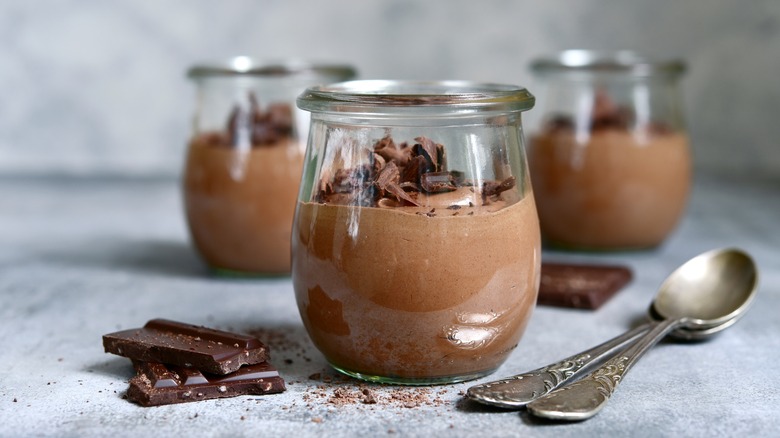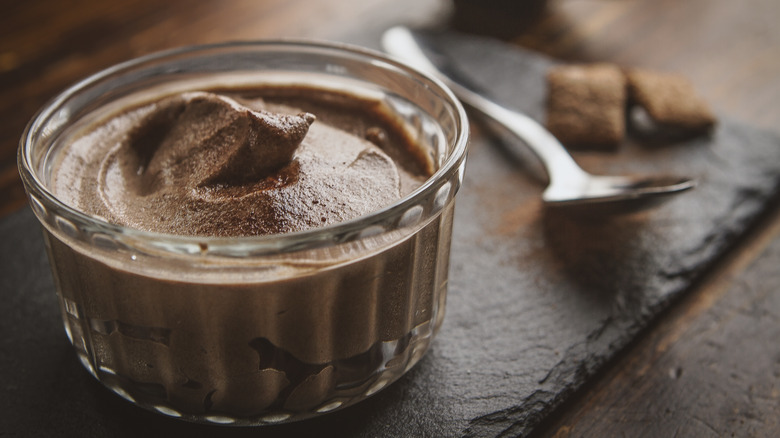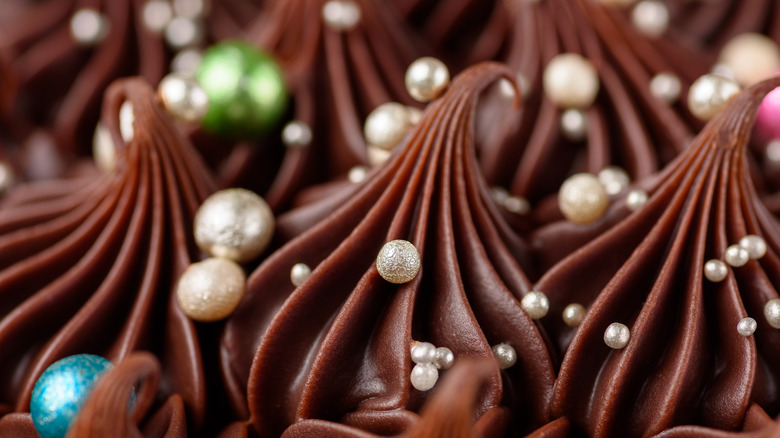Crémeux Vs. Mousse: What Makes Them Different?
There's nothing that screams decadence like a bowl of something creamy, fluffy, and chocolatey. It's the perfect way to end an extravagant meal at a Michelin-starred restaurant or perk up a lazy Sunday afternoon with a little treat. And when it comes to the wonderful world of French desserts, there are many options for sweet things that hit all these markers. There's gooey ganache, custardy crème pâtisserie, and mouthwatering meringue. Most famous of all is mousse, a light and airy French dessert made rich and silky with the addition of chocolate, usually served in a bowl or ramekin, and often topped with a dollop of whipped cream or a smattering of tart berries.
A similar velvety chocolate dessert is crémeux, a luxurious cream-based frosting either eaten on its own or used as a filling for cakes, tarts, or cream puffs. But what exactly distinguishes a crémeux from a mousse? Is it simply the name or is there something fundamentally different about the two?
What is mousse?
Originally known as mayonnaise de chocolat, mousse was actually invented not by a pastry chef, but by the French post-Impressionist artist Henri de Toulouse-Lautrec. Its name means "foam" in French, in reference to its light, airy texture. Egg whites, heavy cream, or sometimes both are whipped into a fluffy cloud, and then gently folded into sweet fillings like chocolate ganache or hazelnut puree, or even savory ingredients like avocado or smoked salmon.
When sugar and egg whites are the base aerators of the dish, this means that you are technically making a meringue, which gives delicate structure to many French desserts. At other times, whole eggs are used to make mousse, and many recipes even call for gelatin to help the mousse set, though it will solidify on its own after a few hours in the fridge.
When heavy whipping cream is used in lieu of eggs to make mousse, however, is this something like a crémeux?
What is crémeux?
Crémeux is a crème anglaise that is emulsified with chocolate. Crème anglaise is similar to custard but is not as dense, since it doesn't require a thickening agent like cornstarch to achieve its creamy texture. It is made from cream, milk, egg yolks, and sugar, with chocolate added at the end to create the crémeux. Egg yolks are first beaten with sugar, then tempered with a heated mixture of cream and milk before being heated in a saucepan and blended with chocolate.
Crémeux literally means "creamy" in French. It's soft and smooth, but stable enough to be piped into other desserts. It differs from mousse in that it does not contain any whipped ingredients, doesn't have the airy texture, and is fuller in consistency. Instead of the fluffy meringue quality that egg whites give mousse, crémeux relies on the emulsification properties of fatty egg yolks to achieve its final form.


